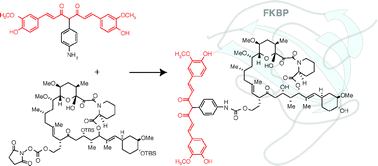Bifunctional molecules evade cytochrome P450metabolism by forming protective complexes with FK506-binding protein†
Abstract
Despite their large size and complexity, the macrolide natural products

* Corresponding authors
a
University of Michigan, Department of Pathology and the Life Sciences Institute, 210 Washtenaw Avenue, Ann Arbor
E-mail:
gestwick@umich.edu
Fax: +1 (734) 764-1247
Tel: +1 (734) 615-9537
Despite their large size and complexity, the macrolide natural products

 Please wait while we load your content...
Something went wrong. Try again?
Please wait while we load your content...
Something went wrong. Try again?
P. S. Marinec, J. K. Lancia and J. E. Gestwicki, Mol. BioSyst., 2008, 4, 571 DOI: 10.1039/B720011K
To request permission to reproduce material from this article, please go to the Copyright Clearance Center request page.
If you are an author contributing to an RSC publication, you do not need to request permission provided correct acknowledgement is given.
If you are the author of this article, you do not need to request permission to reproduce figures and diagrams provided correct acknowledgement is given. If you want to reproduce the whole article in a third-party publication (excluding your thesis/dissertation for which permission is not required) please go to the Copyright Clearance Center request page.
Read more about how to correctly acknowledge RSC content.
 Fetching data from CrossRef.
Fetching data from CrossRef.
This may take some time to load.
Loading related content
